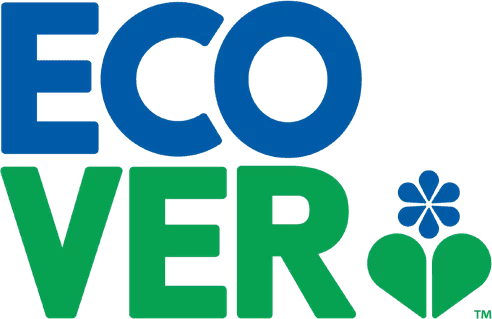OUR ECOLOGICAL FACTORY
When we built our Malle factory in 1992, it was celebrated for its ecological design. Made using over 90% recycled or renewable materials. With reclaimed wooden beams and strengthened European pine instead of steel and concrete. And special low energy ‘eco’ bricks for the walls.
And that’s not all. We designed the building to let in lots of sunlight, making it a nicer place to work and reducing our need for heating. We also planted a living green roof that helps with insulation and blends in naturally with the local environment. Our flowering small succulents now attracts plenty of wildlife, including magnificent ospreys.

AIMING FOR A ZERO-CARBON FOOTPRINT
Our carbon footprint isn’t just another buzzword for us. It’s something we tackle head on. From using recycled and recyclable packaging to making our formulas more concentrated.
We obsessively measure carbon emissions for our footprint – ingredients, packaging, travel, utilities, manufacturing and distribution, the works. We’ve worked out that our global current carbon emissions in 2017 were 74,434 metric tons. Which, as far as we’re concerned, is 74,434 tons too many.
A zero-carbon footprint future is our bold long term goal. But for now, we’re working on getting our emissions down through initiatives like using renewable energy in our factory.
WORKING FOR A ZERO-WASTE FOOTPRINT
It’s not all about CO2. We aim to be recycling or composting 100% of our waste by 2020. And we’re not far off that figure today. Achieving this goal would mean that none of our waste will end up in landfill.
KEEPING WATER CLEAN
We’re total water obsessives. Always have been. Always will be. It all started when we saw the damage that phosphates were doing to plant and aquatic life, and launched our phosphate-free laundry washing powder.
In 1979, banning phosphates from cleaning products seemed like a revolutionary idea. In 2017, it was finally signed into European law. While we may have won that particular battle, we know there’s still so much more to do. We’re rolling up our sleeves and doing the best we can to create a sustainable future for our water systems.
The UN estimates that by 2025, two-thirds of us will live in areas where water supplies – our most important and life-sustaining substance – are stressed. It’s fair to say that we are not okay with this.
REDUCING OUR WATER FOOTPRINT
Each year we obsessively measure our Water Footprint. As our business grows, we’re constantly seeking new and ingenious ways of using less water as a company. We’re starting to research how ingredient-producing crops are grown, launching more concentrated laundry liquids, and looking at long term solutions to influence the amount of water people use with our products at home. It all counts.
We work hard to reduce the amount of water we use in our factories. We survey our suppliers to identify ways to improve their water footprints too.
